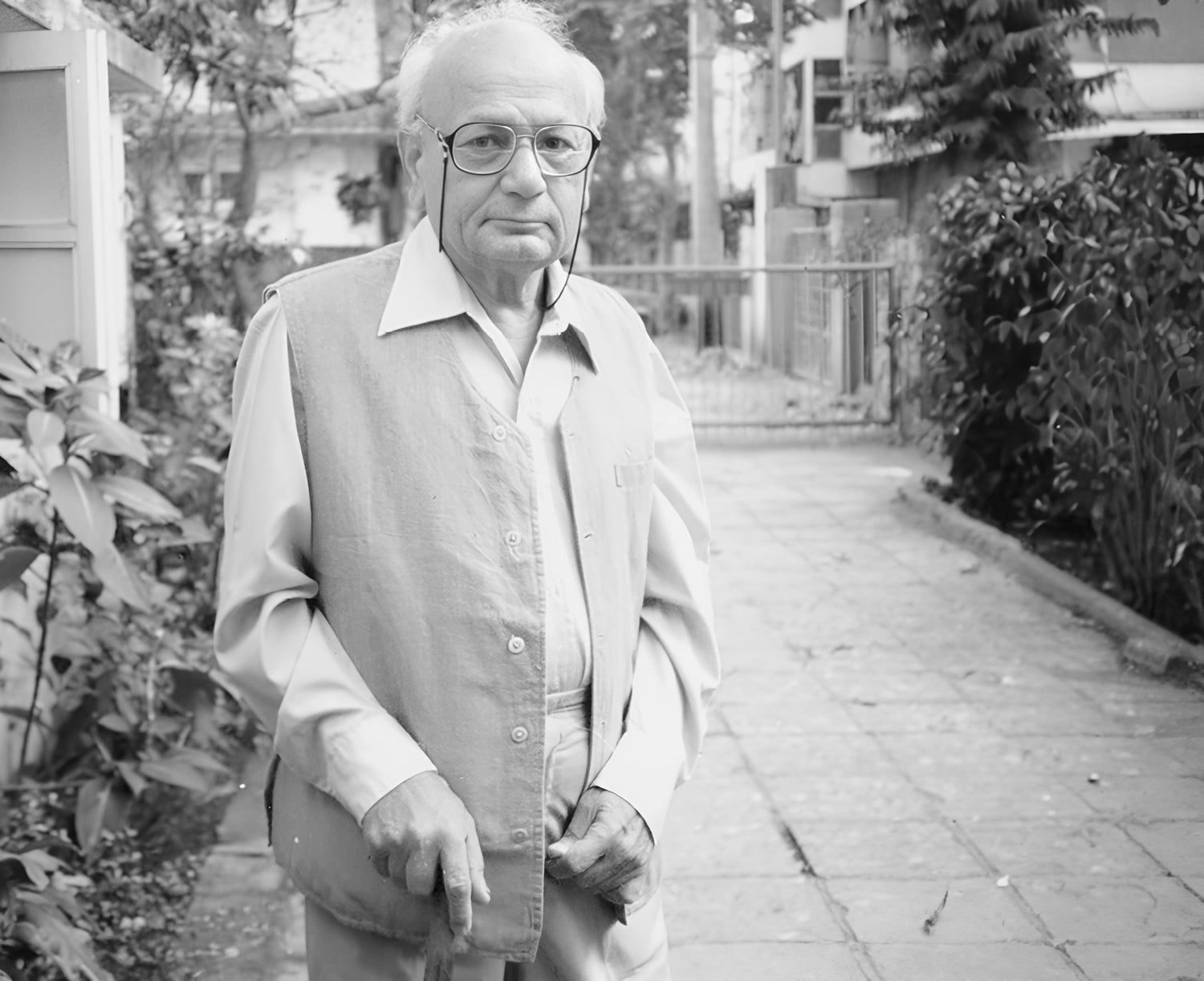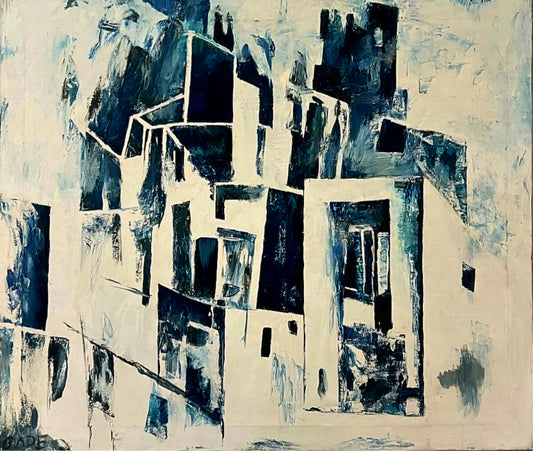
HARI AMBADAS GADE
Hari Ambadas Gade’s work is defined by an energetic fusion of analytical precision and expressive spontaneity. Trained in science as well as art, Gade brought a rare structural clarity to his compositions, infusing his canvases with a sense of order even at their most abstract. His paintings often pulse with layered textures, angular planes, and radiant color fields, gestural yet deliberate, chaotic yet composed. The influence of cubism and expressionism is evident, but his visual idiom remained firmly rooted in the realities of a rapidly changing India.
His artistic journey began while preparing for educator examinations in Jabalpur, where painting became an outlet that gradually evolved into his central pursuit. Early landscapes revealed a sensitivity to form and environment, but it was through abstraction that Gade articulated his vision with greatest intensity. His shift toward non-representational forms marked a break from academic norms, aligning him with a new generation of artists seeking to define post-independence Indian modernism on their own terms.
As a founding member of the Progressive Artists’ Group (PAG), Gade was instrumental in dismantling colonial-era art conventions and forging a distinctly modern Indian visual language. Alongside contemporaries like F.N. Souza and S.H. Raza, he championed an aesthetic of innovation, one that embraced international movements while remaining alert to local conditions. Gade’s work often reflected on the landscape, not merely as topography, but as metaphor for the nation’s transformation. Urban density, rural decay, architectural fragments, and natural elements all found their way into his compositions, filtered through a language of abstraction that retained the pulse of lived experience.
His color palette, marked by rich ochres, earthy browns, and luminous blues, was both expressive and atmospheric, while his brushwork conveyed urgency without losing control. This balance between intuition and calculation gave his work a unique tension, neither fully cerebral nor purely emotive, but operating at the intersection of the two.
Gade’s impact extended beyond his own practice. His leadership within the Progressive Artists’ Group helped catalyze one of the most significant shifts in Indian art history. His vision expanded the vocabulary of modern Indian painting, laying a foundation for future artists to explore abstraction with rigor and relevance. Today, his legacy endures as a testament to experimentation grounded in intellect, and to a life committed to redefining the boundaries of artistic possibility.

